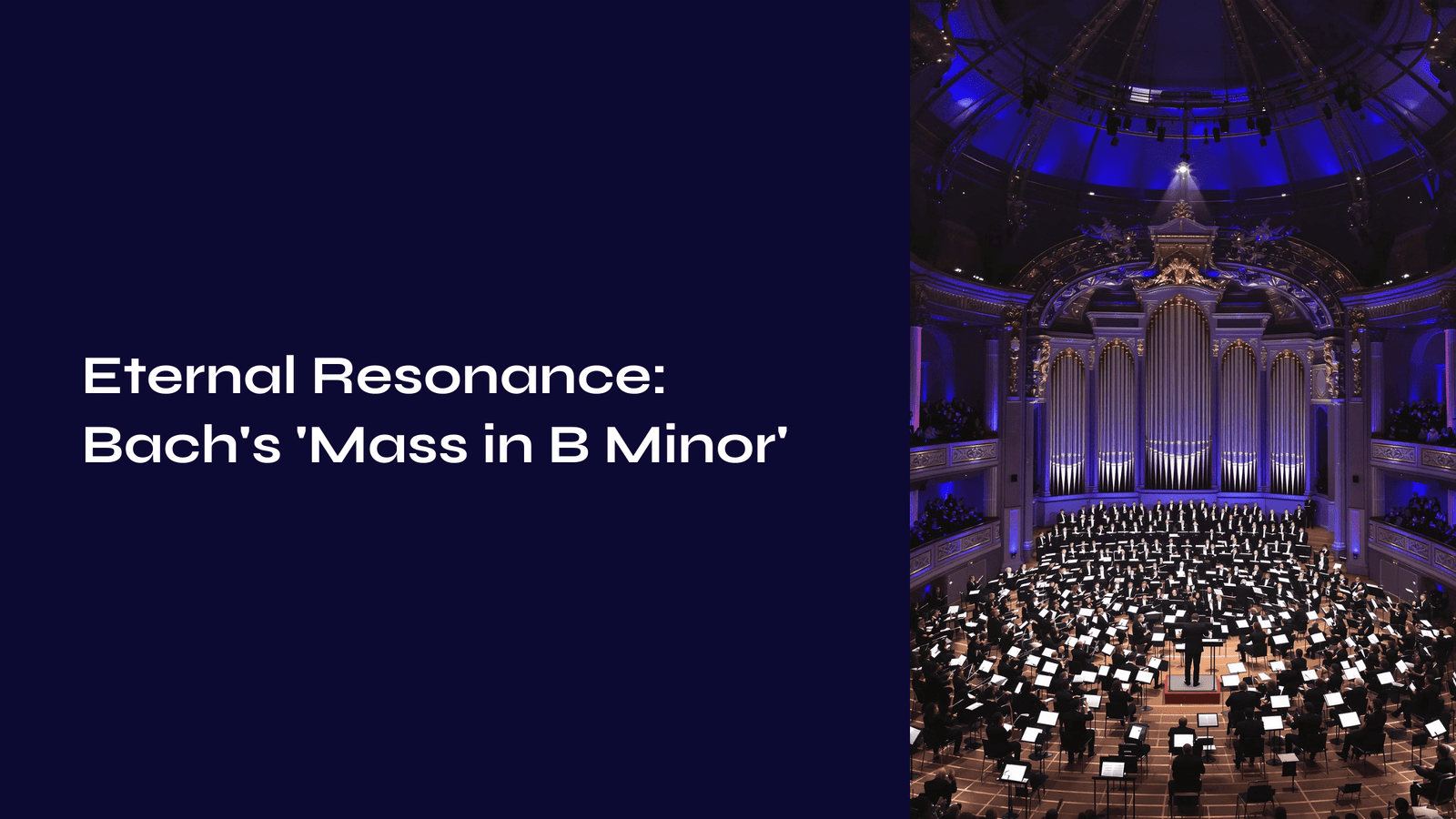Table of Contents
On an autumn evening, as the lights dimmed in the concert hall and the first notes resonated through the air, I felt a sensation as if my soul was leaving my body. The bass voice intoned the first “Kyrie,” and in that moment, I encountered Bach’s ‘Mass in B Minor’ for the first time. From that instant, this music has been deeply etched in my heart.
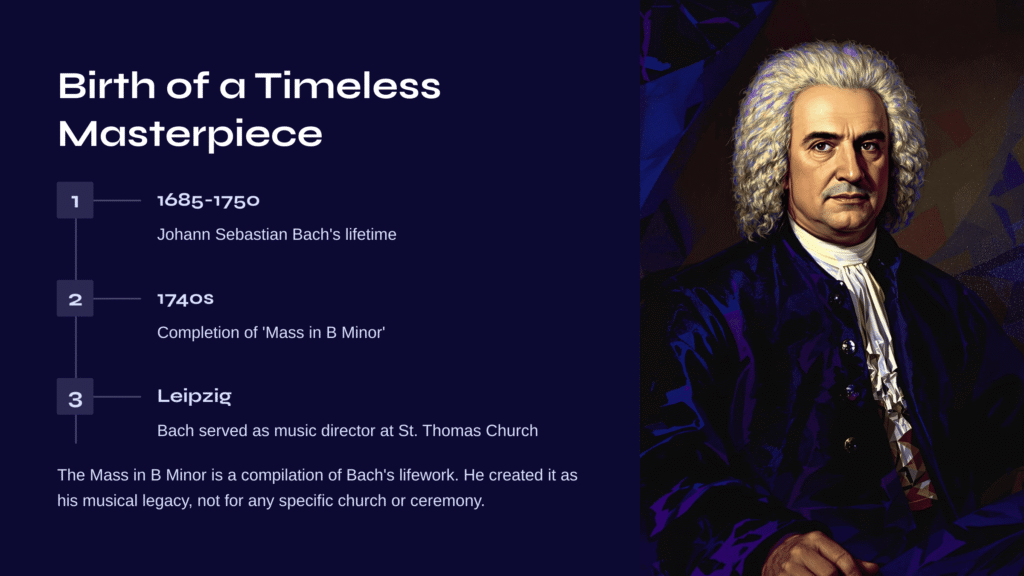
Birth of a Timeless Masterpiece
Johann Sebastian Bach (1685-1750) completed his ‘Mass in B Minor’ (BWV 232) in the 1740s, during his later years. At that time, he was serving as the music director at St. Thomas Church in Leipzig, but this work was not composed for any specific church or ceremony. Rather, it appears he intended it as his musical legacy.
The Mass in B Minor is a compilation and reworking of various pieces Bach composed throughout his life, and is considered one of the greatest choral works in music history. The first “Kyrie eleison,” in particular, serves as a majestic overture that announces the beginning of this masterpiece.
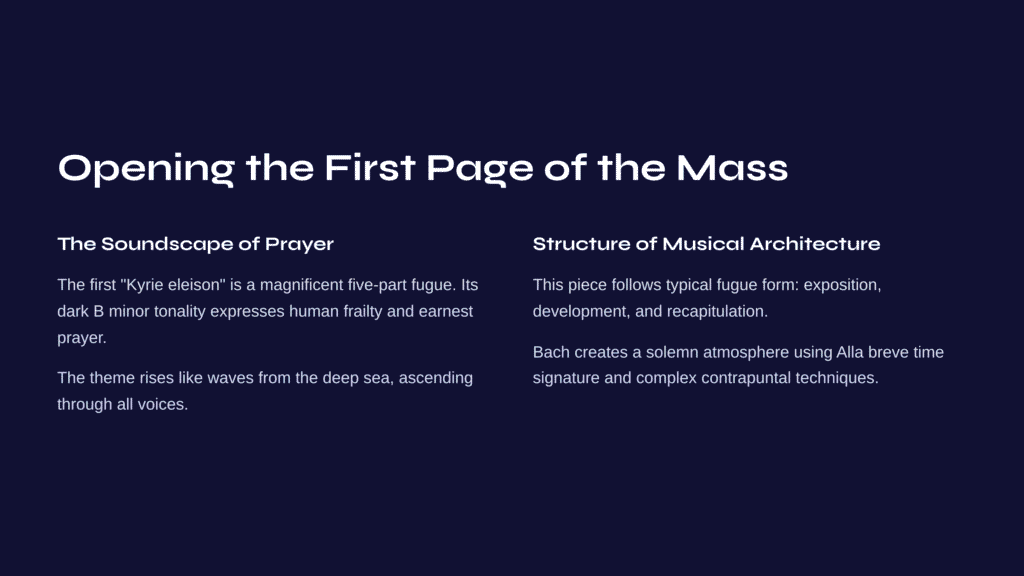
Opening the First Page of the Mass
The Soundscape of Prayer
The first “Kyrie eleison” is a magnificent fugue composed for a five-part chorus (Soprano I & II, Alto, Tenor, Bass). The dark and solemn atmosphere of B minor expresses human frailty and earnest prayer to God. The theme, beginning in the bass voice, rises gradually like waves emerging from the deep sea, ascending through tenor, alto, soprano II, and finally soprano I.
Structure of a Musical Architecture
This piece follows the typical fugue form. It consists of an exposition where the theme appears in each voice in turn, a development section where new musical ideas contrasting with the theme unfold, and a recapitulation where the theme returns.
Bach creates a solemn atmosphere using the Alla breve (2/2) time signature, while also crafting a complex and rich musical texture through contrapuntal techniques that allow each voice to move independently. The genius of Bach is evident in how he imbues the short text “Lord, have mercy” with such profound musical expression.
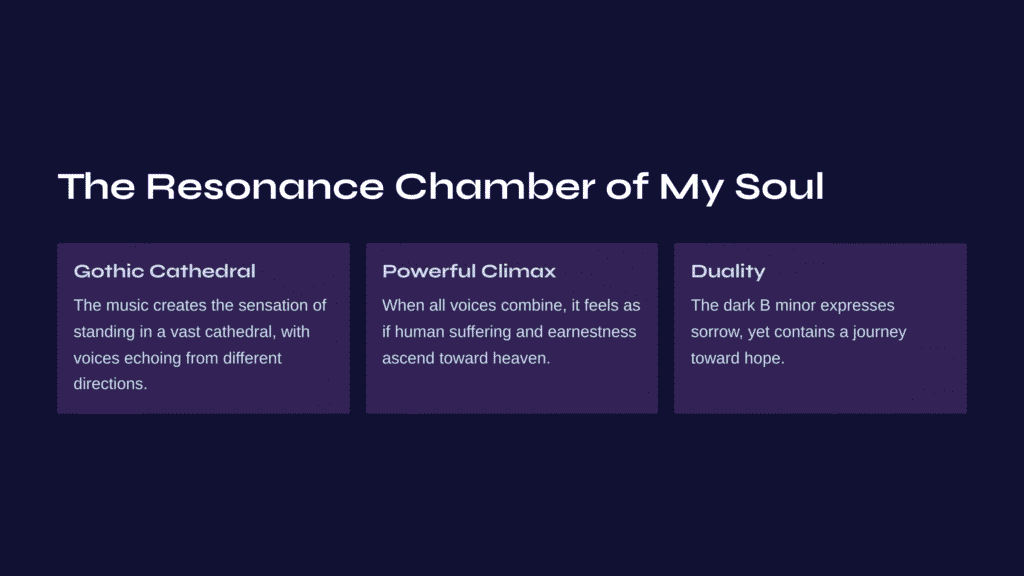
The Resonance Chamber of My Soul
When I first heard this piece, I felt as if I were standing inside a vast Gothic cathedral. As each voice sang the theme in turn, the music felt like echoes coming from different directions. Particularly powerful was the moment when all voices combined to reach a climax, as if all human suffering and earnestness were ascending toward heaven.
The dark tonality of B minor expresses sorrow and pain, yet within it seems to be a journey toward finding a light of hope. This duality in Bach’s music—the harmony between human anguish and spiritual hope—deeply resonates with the listener’s heart.
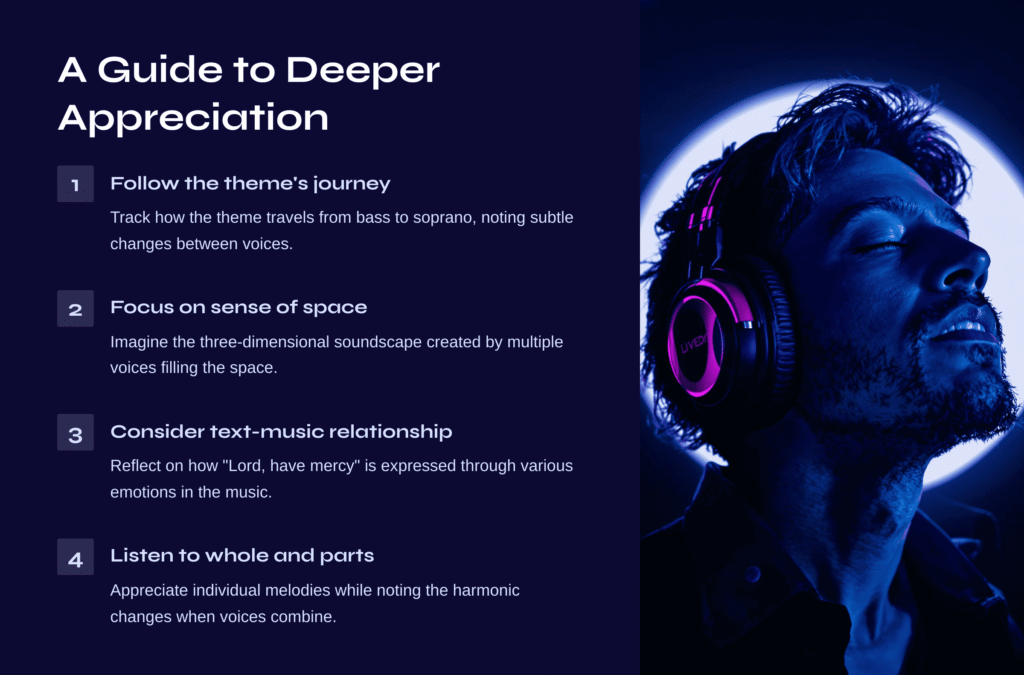
A Guide to Deeper Appreciation
Here are some tips for appreciating the “Kyrie eleison” more deeply:
- Follow the journey of the theme: Listen by following the theme’s journey from bass to soprano. It’s an interesting experience to feel the subtle changes as the same theme is expressed through different voices.
- Focus on the sense of space: Imagine the three-dimensional soundscape created by multiple voices. You can feel as if the sound is moving and filling the space.
- Consider the relationship between text and music: Think about how the short prayer “Kyrie eleison” (Lord, have mercy) is expressed deeply through music. Various emotions—earnestness, pleading, reverence, fear—are contained within a single phrase.
- Listen to the relationship between the whole and its parts: While the melody of each individual voice is beautiful, also pay attention to the harmonic changes and overall flow created when they come together.
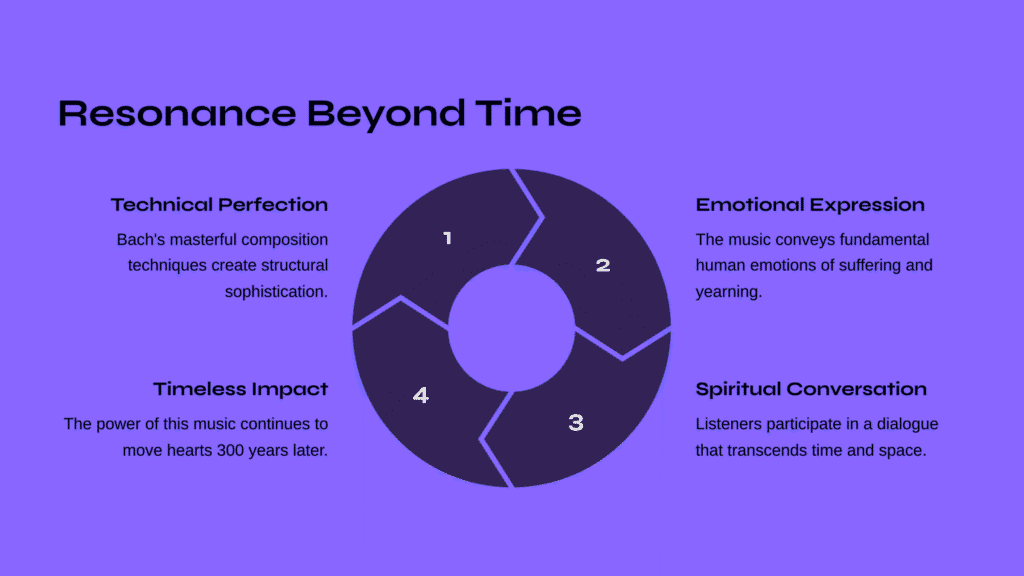
Resonance Beyond Time
Bach’s “Kyrie eleison” possesses a powerful force that moves our hearts even today, transcending 300 years of time. The true beauty of this music lies not simply in its technical perfection or structural sophistication, but in its expression of the most fundamental human emotions—the earnestness felt in suffering and the yearning for comfort.
The next time you listen to this piece, try to go beyond merely hearing the music and listen to the message Bach embedded in each note. Then, beyond a simple listening experience, you may feel a deep emotion as if participating in a spiritual conversation that transcends time and space.
Still in the Mood? Here’s Another Classic for You
Beethoven’s Egmont Overture: A Musical Cry for Freedom – ReViewMaster DEN
